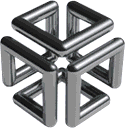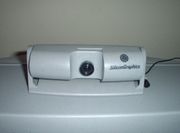

CPU: MIPS R4000/R4600/R5000
Video: 13W3 8bit XL, 24bit XL, XZ
Max Ram: 256MB
chassis: pizza box
bus: GIO32
Menu:


The SGI indy was designed for desktop publishing, low-end CAD and multimedia. It includes onboard ISDN,
SCSI and composite/svideo inputs. The machine is in a blue pizza box case.

CPU: The early Indys took a 100MHz MIPS R4000 but this proved too slow. The line was later upgraded to
the R4600. There were two R4600 Processor Modulues available; one with L2 cache (SC) and one without (PC). The
SC model is generally 20 to 40 percent faster than the PC version. A R5000 processor module running at 180MHz
was also available.
RAM: The indy uses standard 72pin True Parity FPM SIMMs allowing up to 256MB of RAM when using 32MB modules.
Graphics: Graphics boards available were the 8-bit XL, 24-bit XL and 24-bit XZ. Each supported a
resolution of 1280*1024 at a refresh rate of 76Hz. They use a SUN-style 13W3 monitor connector.
8-bit XL: This card, also known as Newport graphics, is based on the REX3 chipset. They were designed for
general 2D X11 applications that require no 3D hardware acceleration.
24-bit XL: This card uses an identical cirucit board to the 8-bit XL but includes three times as much
framebuffer memory to allow 24-bit colour. In an Indy with a R5000 CPU these graphics options are called
XGE because the XZs geometry engines perform 3D calculations slower than doing them in software on the R5000.
XZ: These cards offered very good non-textured 3D performance sacrificing a bit of 2D performance. The
XZ is in two boards that consumes one GIO slot. It is not possible to install any other GIO Option boards while the XZ boards are
installed.
Video: All indys have onboard video input. This comes in the form of Composite, SVideo and digital video
inputs. The digital video input uses a special connector and is intended for use with the IndyCam. The maximum
supported input resolution is 640x480 (NTSC) or 768x576 (PAL).
Drives: The indy has two 1-inch tall 3.5" drive bays. The upper drive bay is externally accessable
and is inteded to hold a SCSI Floptical drive. All external and internal drives share a single Fast SCSI bus.
Networking: Onboard 10base5/10baseT Ethernet and ISDN. The Ethernet ports are half-duplex only. 10baseT
takes precedence over the 10base5 port. The ISDN has no NT1; an external one may be required.
Power Supply: The most common component in the Indy to fial is the Power Supply. Newer power supplies are manufacturerd by
Sony but they are expensive.
NVRAM battery: Like on a SUN workstation, the Indy's Ethernet (which doubles as its serial number) is
stored in battery backed RAM. This means that when the internal battery dies so does the system. It is possible
to replace and reprogram the NVRam chip. The MAC address can be set with the command "setenv -f eaddr xx:xx:xx:xx:xx:xx"
where -f is to force the change.
 The Indycam was a small fixed-focus camera intended to sit ontop of the monitor. It was designed for video conferencing
and connects to the digital video input.
The Indycam was a small fixed-focus camera intended to sit ontop of the monitor. It was designed for video conferencing
and connects to the digital video input.